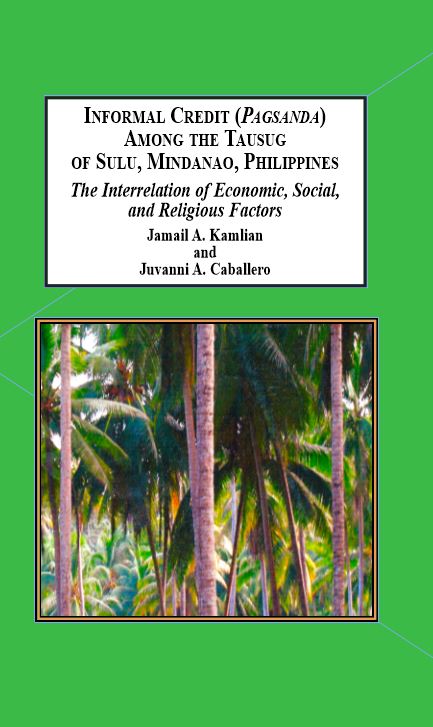This is our backup site. Click here to visit our main site at MellenPress.com
Informal Credit (Pagsanda) Among the Tausug of Sulu, Mindanao, Philippines: The Interrelation of Economic, Social, and Religious Factors

| Author: | Kamlian, Jamail Caballero, Juvanni | |
| Year: | 2018 | |
| Pages: | 212 | |
| ISBN: | 1-4955-0641-X 978-1-4955-0641-3 | |
| Price: | $179.95 | |
This book discusses the phenomenon of Pagsanda, an institution in the Philippines. Pagsanda is an institution that has its own merits and demerits. While Pagsanda provides the ordinary Tausug easy and available access to loans that are not readily available in formal financial institutions like banks, hard evidence would show that Pagsanda as presently practiced in Sulu could perpetuate peasant indebtedness; promote feudalism; fuel clan feuds; cause displacement; contribute to the proliferation of loose firearms; aggravate a violent electoral process; hamper the delivery of goods and services by the local government units; and expose or push the Tausug to other forms of criminality.
Reviews
"The value of this work by Kamlian and Caballero lies in the fact that the lending practices or pagsandais rooted in Tausug culture that is unknown to many parts of the country. More native scholars should record other lending practices among other tribes of Mindanao, if these are practiced towards the understanding of how certain cultural practices shape society."
Christine F. Godinez Ortega
"A compelling narrative weaving the entire gamut of the Tausug social tapestry through the prism of the Pagsanda - a traditional informal credit system that has in itself succumb to the seductions of profit, losing in the process its laudable traditional role of providing financial safety nets. While it has evolved into becoming part of the problem, it holds a promise of becoming a major part of the solution."
Dr. Hilton J. Aguja, Iligan Institute of Technology
Christine F. Godinez Ortega
"A compelling narrative weaving the entire gamut of the Tausug social tapestry through the prism of the Pagsanda - a traditional informal credit system that has in itself succumb to the seductions of profit, losing in the process its laudable traditional role of providing financial safety nets. While it has evolved into becoming part of the problem, it holds a promise of becoming a major part of the solution."
Dr. Hilton J. Aguja, Iligan Institute of Technology
Table of Contents
Acknowledgements
Foreword by Christine F. Godinez Ortega
Preface
Glossary of Tausug Terms
I. Introduction
II. The Setting
III. Pagsanda as a Tausug Institution
IV. Pagsanda and Conflict
V. Summary and Conclusion
References and Suggested Readings
Index
Foreword by Christine F. Godinez Ortega
Preface
Glossary of Tausug Terms
I. Introduction
II. The Setting
III. Pagsanda as a Tausug Institution
IV. Pagsanda and Conflict
V. Summary and Conclusion
References and Suggested Readings
Index
